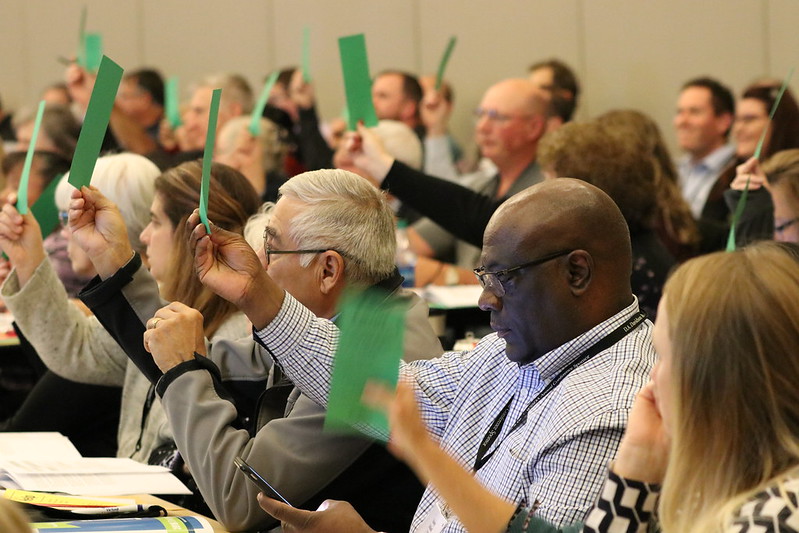Spotlight: The Resolutions Committee

In the spring issue of WSSDA Direct, the chair and vice-chair of the Resolutions Committee answered a few questions about their work on the committee. Below is an expanded version of their answers, which will may shed light on the committee’s work and the opportunities that exist for school directors who wish to deepen their engagement with WSSDA.
If you’re not familiar with it, the Resolutions Committee keeps track of and facilitates the process of adopting or amending WSSDA’s permanent positions. Permanent positions represent the beliefs and values as adopted by WSSDA members. Here’s what we learned from committee vice chair Christine Chew of Bellevue and committee chair Bruce Richards of Central Kitsap:
What’s on the horizon for the committee and what’s your role in it?
BR: The future for this committee is whatever the WSSDA members want it to be. For the last three years, three members of the Resolutions Committee and three members of the Legislative Committee have been working with the WSSDA board and staff to streamline our positions for alignment and relevance. As we transition away from an annual conference with a delegate assembly to a joint General Assembly with the Legislative Committee in September, we will be able to take care of the business of the WSSDA at a single event apart from our annual conference. This will allow the WSSDA Annual Conference to focus exclusively on the professional development of our members to become more effective school board members. 2020 will be the first time we hold a combined assembly, and I intend to work to help make this a successful event.
CC: Our committee has three priorities this year. Most importantly, we are charged with helping carry out the will of our WSSDA membership to join our legislative and delegate assemblies into one combined general assembly where all of the positions (permanent and legislative), and any changes to the by-laws, can be considered by our membership. We hope to do this in a way that helps clarify to everyone how the different positions fit together and to make it easier for districts to have a voice in setting the positions and direction of the organization.
Our second priority is to continue our collaboration with the legislative committee to better align our positions and organizational guidelines, so that staff and directors alike are best positioned to advocate for the needs of our members. One example of where you can see evidence of this coming together is in how various individual district legislative priorities are lining up with one another and with the WSSDA legislative priorities.
Our third priority is for the committee to review 20% of our permanent positions to ensure they remain relevant, clear and that they reflect the enduring foundational principles of our organization. Where we see missing principles or a need for clarification or better alignment, we will collaborate across districts and with staff to propose changes and bring them back to the WSSDA membership for consideration.
My role as the vice-chair of the committee and as a representative on the positions subcommittee is to help organize the above work so that all committee members from all districts can provide input and can collaborate to deliver on each priority for all of WSSDA.
Why did you join the Resolutions Committee?
CC: I consider WSSDA’s collection of positions to be one of the most powerful ways that we directors find our points of critical unity and articulate our collective voice on behalf of all the districts, so I wanted to help increase the power of that voice for all districts.
BR: I wanted to get involved in WSSDA and find out more about what the organization was about. Joining the Resolutions Committee was my way of doing that.
Is there anything you learned or insights you’ve had over the course of your tenure on the committee?
CC: Working with colleagues from across the state has surfaced just how much more we all have in common and how committed we all are to serving the students in each of our districts and across the state.
BR: It’s just turned out to be such a rewarding experience due to the incredible members of the committee that I have been fortunate to work with. We’ve gone from working in isolation to reviewing permanent positions to collaborating with the Legislative Committee, improving and aligning all WSSDA positions. That will make directors and WSSDA staff far more effective when dealing with the public, legislators and school administrators.
What’s it take to be an effective member of the Resolutions Committee? Can anyone do it? Can someone prepare?
CC: Any board director with passion for serving all kids, and a collaborative and open mindset about finding win-win solutions, would be an effective member of the resolutions committee.
BR: I believe that any person who is committed to being an effective school director can be an effective member of the resolutions committee.
